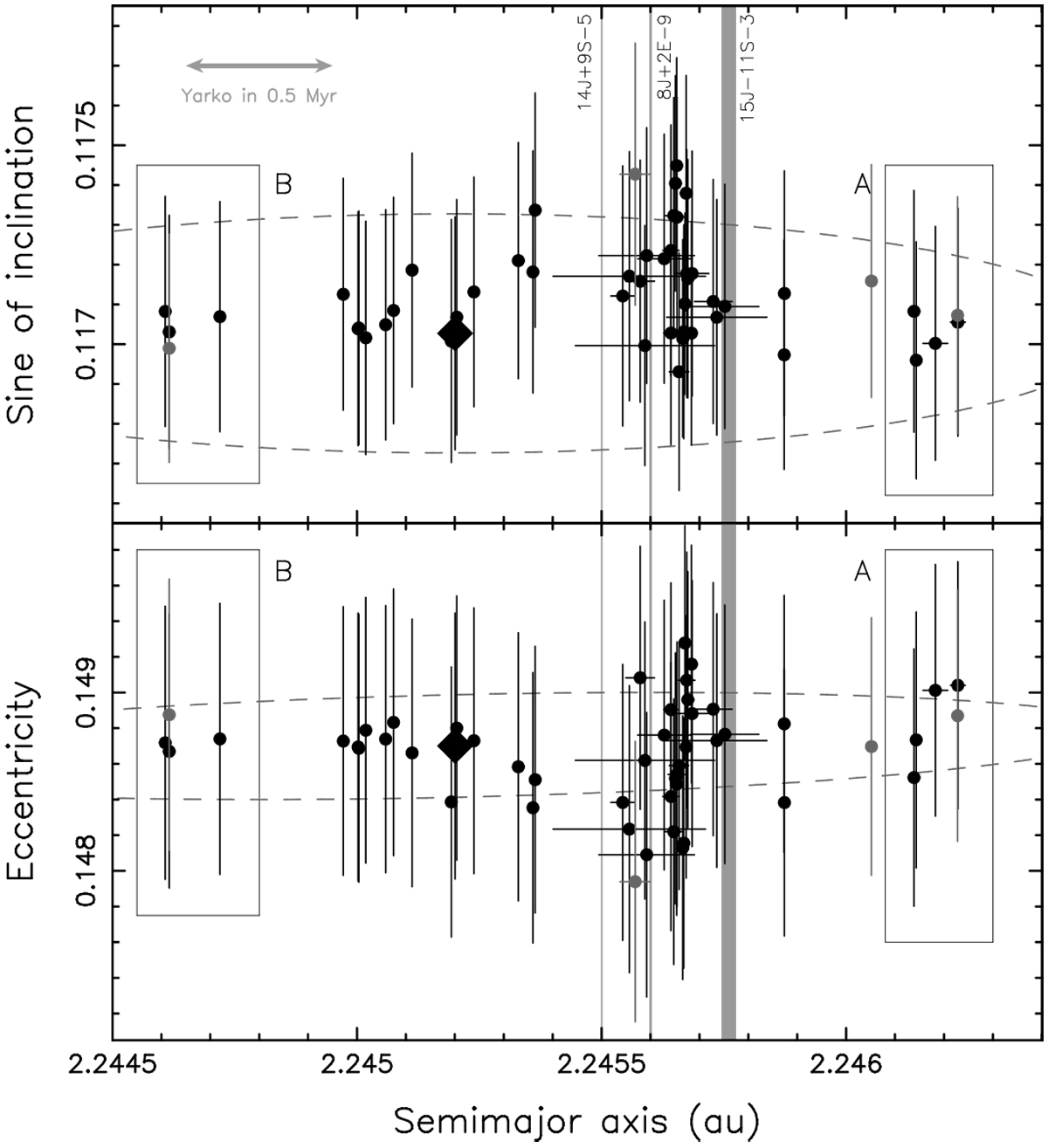Fig. 5

Adelaide family represented by two possible plane-projections of proper orbital elements: (i) semi-major axis aP vs. sine of inclination sinIP (top panel), and (ii) semi-major axis aP vs. eccentricity eP (bottom panel). Shown are the largest fragment (525) Adelaide (diamond) and the smaller family members (black filled circles for multi-opposition orbits, grey for single-opposition orbits). The vertical and horizontal bars are the formal uncertainty values of the proper elements from Table A.1. The vertical grey stripes indicate the locations of several weak mean motion resonances (from left to right): 14J+9S-5, 8J+2E-9, and 15J-11S-3; the width of the line approximates resonances strength at the value of proper eccentricity using Gallardo (2014). Boxes A and B contain asteroids whose orbits are well separated from (525) Adelaide, suitable for dating family origin using backward integrations (see Sect. 2.4). The grey arrow in the top panel gives an estimate of maximum drift in semi-major axis of a ≃ 0.5 km asteroid, typical of many small members in the family (Fig. 4), in 500 kyr. The grey dashed ellipses indicate proper element zones in which fragments may land if ejected from (525) Adelaide with 6 m s−1 velocity (assuming true anomaly f = 90° and argument of perihelion such that ω + f = 0° at origin).
Current usage metrics show cumulative count of Article Views (full-text article views including HTML views, PDF and ePub downloads, according to the available data) and Abstracts Views on Vision4Press platform.
Data correspond to usage on the plateform after 2015. The current usage metrics is available 48-96 hours after online publication and is updated daily on week days.
Initial download of the metrics may take a while.


